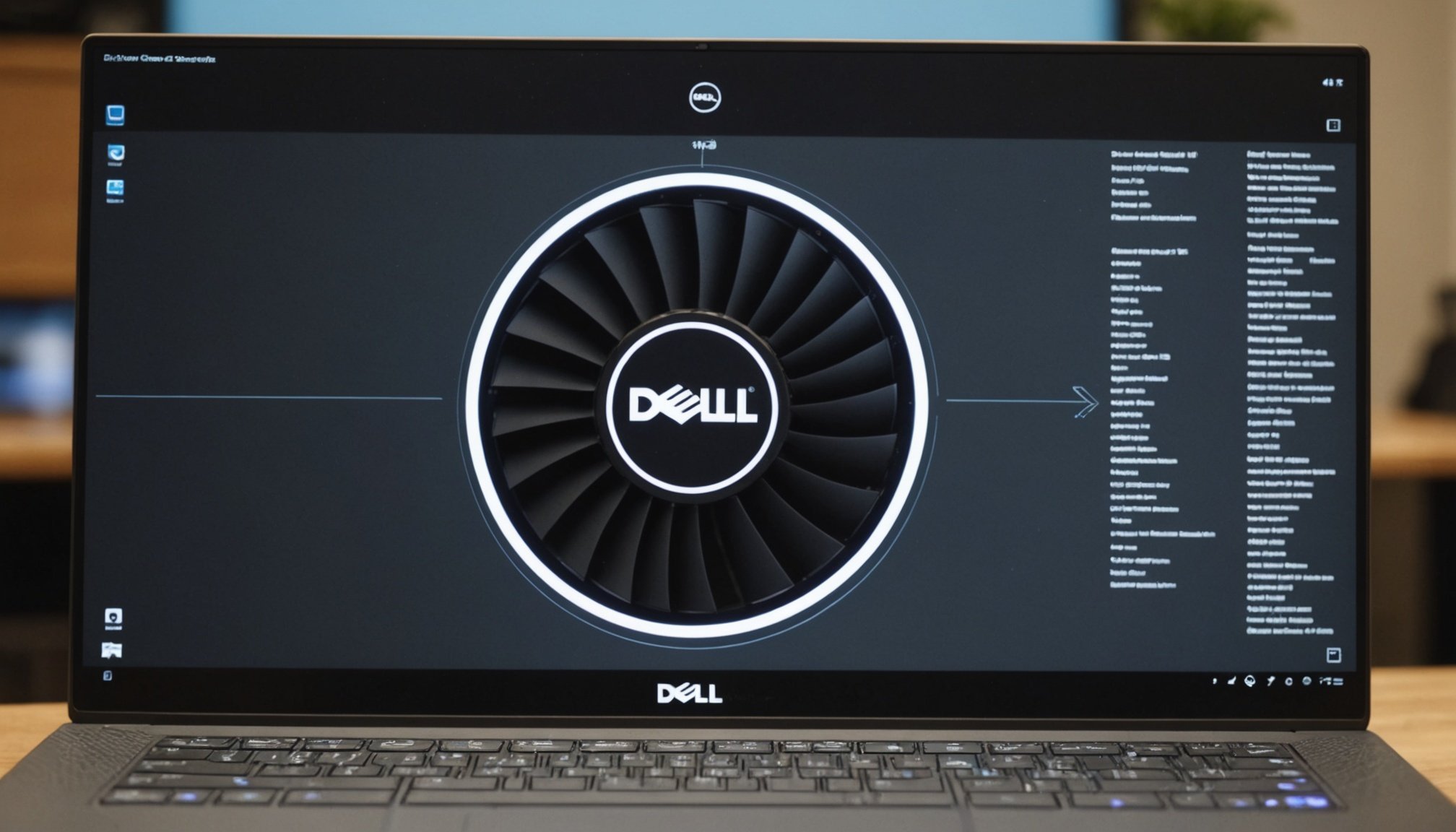Overview of External GPU Benefits
An eGPU offers significant advantages for those looking to enhance their graphics performance, particularly in gaming and video editing. By attaching an external graphical processing unit, laptops such as the Dell XPS 13 can handle more demanding applications, transforming ordinary setups into high-performance machines. This upgrade drastically enhances graphics performance, providing smoother visuals and faster rendering times.
Not only does this augmentation aid in gaming, but it also bolsters multitasking capabilities. Users can seamlessly switch between resource-intensive tasks without experiencing lag. This aspect is particularly beneficial for professionals who rely on high-performance graphics for video editing or 3D modelling projects.
Also to see : A Comprehensive Guide to Installing and Configuring Extra RAM in Your Lenovo ThinkStation P620
One of the appealing aspects of an eGPU is its portability and flexibility. Unlike a desktop, you can take a laptop equipped with an eGPU to different locations, giving you a comprehensive solution that balances power and mobility. It allows users to adapt their setups based on current tasks, transitioning between work and play with ease. Thus, upgrading to an eGPU harmonises convenience with function, offering an efficient and expandable computing experience.
Hardware Compatibility Requirements
Understanding hardware requirements is crucial for maximising the potential of your Dell XPS 13, especially when considering expansion options like eGPUs. The Dell XPS 13 features a Thunderbolt 3 port, which plays a vital role in enabling compatibility with external graphics processing units (eGPUs).
Also to discover : Step-by-Step Guide to Setting Up and Optimizing a RAID 5 Array on Your Synology DS920+ for Superior Performance
To ensure seamless connectivity, you must choose compatible eGPUs. Recommended units often include those that support the Thunderbolt 3 infrastructure. Models such as the Razer Core X and AORUS Gaming Box offer specifications that align well with the Dell XPS 13 specifications. These choices ensure that you can harness additional graphic power without encountering compatibility issues.
In addition to the eGPU itself, additional hardware accessories can enhance your system’s functionality. Quality Thunderbolt 3 cables, for example, are essential for maintaining high-speed data transfer. Moreover, a docking station can be a beneficial addition, providing extra ports and improving overall system connectivity. By understanding these hardware dynamics, you can ensure your Dell XPS 13 is equipped to handle more demanding tasks efficiently. This holistic approach allows for a smoother integration of hardware upgrades, maximising both performance and usability.
Preparing Your Dell XPS 13 for eGPU Installation
Before embarking on your eGPU configuration journey, it’s crucial to follow certain preparation steps for your Dell XPS 13. These steps ensure that you avoid unnecessary hiccups and optimise your setup.
Firstly, update your BIOS and drivers. This ensures that your Dell XPS 13 has the latest performance optimisations and stability improvements, which are crucial for seamless eGPU configuration. Navigate to Dell’s official website to download and install the latest updates specific to your machine’s model.
Equally important is verifying your Thunderbolt 3 settings in BIOS. Reboot your laptop and enter the BIOS setup by pressing F2 during startup. In the BIOS menu, ensure that Thunderbolt 3 support is enabled. This step is integral as it allows your laptop to recognise and communicate effectively with the eGPU.
Before proceeding with further modifications, consider your backup and data requirements. It is wise to back up all necessary data to prevent potential loss during the installation process. Use an external drive or cloud storage for peace of mind.
By meticulously following these preparation steps, your Dell XPS 13 will be well-equipped for a successful eGPU installation, paving the way for an enhanced performance experience.
Step-by-Step Installation Guide
Installing an external GPU (eGPU) can greatly enhance the performance of your Dell XPS 13. This setup guide will walk you through the process, from unboxing to testing.
Unboxing and Initial Setup
When you first receive your eGPU, start with a thorough inspection of both the eGPU and its accessories. This ensures all components are present and in good condition. Next, connect the eGPU to your Dell XPS 13. For a smooth connection, use the Thunderbolt 3 port for optimal data transfer speed. You may need to rearrange your workspace to accommodate the bulkier setup, making necessary physical adjustments to keep your area tidy and efficient.
Software Installation Process
Begin by installing the appropriate drivers for your eGPU. These drivers ensure that your operating system can communicate effectively with the new hardware. Adjust settings within your operating system as required, focusing initially on display settings to enhance performance. Additionally, optimize settings for any specific applications you frequently use, ensuring seamless performance enhancement.
Testing the eGPU Installation
To evaluate the success of your installation, run benchmarking software on your Dell XPS 13. This allows you to assess any performance improvements objectively. If you encounter issues, troubleshoot by checking driver versions and cable connections. Ensure that your system correctly recognises the eGPU for full functionality.
Performance Improvements After eGPU Setup
Upgrading to an external GPU (eGPU) can dramatically enhance your device’s performance across various tasks. This improvement is often quantified using performance metrics, offering tangible proof of the benefits. Before and after benchmarks show noticeable differences, especially in areas like gaming and video editing.
Gaming performance often sees substantial boosts with an eGPU. With the addition of an eGPU, games can be run at higher graphics settings, providing richer visuals and smoother gameplay. Enhanced graphics settings in popular applications, such as video games, become accessible, allowing for improved refresh rates and greater stability during intensive tasks.
In terms of video editing speed, the use of an eGPU enables quicker render times and efficient handling of high-resolution files. This is particularly beneficial for professionals requiring precision and expediency in their workflow.
User testimonials indicate a high level of performance satisfaction post eGPU installation. Users frequently report that their systems can handle more demanding applications seamlessly, thus validating the upgrade as a worthy investment. These enhancements not only improve the immediate user experience but also extend the lifespan and capabilities of existing hardware.
Troubleshooting Common Issues
When dealing with the Dell XPS 13 and its connectivity to an eGPU, users often experience a variety of common problems. Understanding these issues can lead to quick and effective troubleshooting.
Connectivity Troubles
A frequent issue is the eGPU not being recognized. Check the physical connection, ensuring the Thunderbolt 3 cable is fully inserted. Faulty cables can frustrate connectivity troubleshooting, so it’s worth replacing with a known-working cable. Additionally, ensure that your eGPU enclosure is powered on and receiving sufficient power.
Software Conflicts
Software conflicts are another prevalent problem. Resolving them often involves updating or reinstalling GPU drivers. Ensure both your eGPU and internal GPU drivers are up-to-date to avoid conflicts. Sometimes, software-hardware interactions can cause issues, requiring you to disable integrated graphics within the BIOS settings or through Device Manager for smoother eGPU functioning.
Power Management Adjustments
Performance can also be affected by power management settings. The Dell XPS 13 optimises power usage to prolong battery life but might limit the eGPU’s performance. Navigate to Windows Power Options, find ‘Additional power settings,’ and switch to High Performance mode. This adjustment can significantly enhance performance, although it may increase energy consumption. Being aware of these settings is crucial as they can directly impact the efficiency of your system’s functions.
Considerations and Limitations of Using an eGPU
When using an eGPU, one significant concern is its impact on battery life. An eGPU demands additional power, which can quickly deplete a laptop’s battery, even when not actively gaming or performing demanding tasks. This is crucial for mobile users who often need to consider battery longevity in their workflow. Understanding these energy requirements helps to manage expectations and plan for hybrid usage scenarios.
Another aspect is eGPU limitations regarding portability concerns. While eGPUs enhance system performance, they add bulk, reducing the portability of your laptop setup. These devices require a dedicated space and are typically not as mobile-friendly as integrated graphics solutions. When job demands include frequent travel, having an eGPU can be cumbersome.
Balancing power and portability is essential. Users need to weigh the enhanced graphical performance against the less convenient setup. The decision often depends on whether the priority is strong gaming and rendering abilities or maintaining an ultra-portable laptop experience. For frequent travelers, the usual advice is to limit eGPU use to stationary settings, where space and power sources are readily available.
Recommendations for eGPU Models and Software
Choosing the right eGPU for your Dell XPS 13 can significantly enhance your computer’s performance. Here’s a look at some of the best external GPUs currently on the market. The Razer Core X is a top-rated choice, compatible not only with a Dell XPS 13 but also with various other systems, providing a flexible and future-proof graphics upgrade. Its spacious design allows for housing most desktop-class GPUs, making it a versatile addition to your setup.
When it comes to performance software, the right tools can dramatically optimise your eGPU experience. Applications like AMD’s Radeon Software and NVIDIA’s GeForce Experience offer features that help manage performance settings, driver updates, and cooling systems. These tools are essential for maximising your eGPU’s potential, ensuring you get the best graphical performance.
Future-proofing your graphics setup is another critical consideration. Opt for models that support the latest PCIe standards and have room for power and cooling upgrades. As these components will play a crucial role in maintaining peak performance, ensuring their scalability is key to prolonging the lifespan and relevance of your external GPU configuration. This will safeguard your investment as software and hardware technologies continue to evolve.











